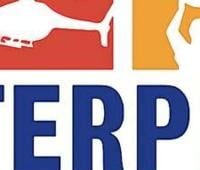Colonial First State has set up an enterprise data platform, bringing decades of data from diverse systems together to uplift business reporting and underpin advanced analytics.

Jeroen Buwalda.
Group executive for transformation, technology and operations Jeroen Buwalda told the iTnews Podcast that the company “wanted to make a step change” in how it managed its data assets.
“That gave us an opportunity to almost think from scratch on setting up our data capabilities,” Buwalda said.
“We created a data foundation without trying to be limited by the existing constraints of the heritage organisation, and we’re now progressively moving the data from the heritage organisation into the target state platform that we have built.”
Being, in Buwalda’s words, a Microsoft-centric organisation, CFS used Azure and Databricks as the foundation for the enterprise data platform and called in outside help from Versent to “help set up the modern data capability”.
It is also making use of Microsoft Purview for data governance and protection, and Power BI as its default data reporting tool.
Prior to the transformation, data had been managed inside of key software applications across CFS, with “multiple point-to-point” integrations between the different data stores and systems “to keep everything connected”.
“The real difference now is that we’ve taken more of a holistic look at how we manage data across our entire ecosystem, with the data platform being the centrepiece of that,” Buwalda said.
“We flipped the philosophy around and now treat the data platform as the foundation from which we want to consolidate reporting and insight, and from which we want to create the right support for distribution, product, call centre and administrative team.
“So, the focus of our efforts is now to try to leverage a more singular strategy for data management and governance than we had previously – and that’s a big change.”
Key drivers
Buwalda said that CFS embraced the opportunity to set up a data lakehouse environment “in a very clean way” to meet certain business drivers.
“First of all, the lakehouse needed to be sustainable. We wanted to lower the cost to manage and run data infrastructure,” he said.
“As you can imagine, over 20-to-30 years, data seems to grow everywhere and people continue to add what seem like really good enhancements to the data capability over time, but if you look back, it becomes very overwhelming and complex to manage.
“We also wanted to have more flexibility. With new innovations coming in that leverage data in a very different way, we need to have flexibility around the data infrastructure to have the ability to change quickly.
“We also wanted to make sure that we started using modern capabilities.
“And finally, the last driver which I’m sure is on every COO or CTO’s mind is security. We wanted to make sure we created a data environment that was secure and suitable for a heavily regulated environment.”
Data access management permissions are managed through CFS’ corporate identity and access management (IAM) platform, which has been redesigned.
“We took on that challenge to re-architect [data access controls], implementing SailPoint to sit across our environments, allowing us to streamline access permissions,” Buwalda said.
A staged transition
CFS is taking a staged approach to the centralisation of data in the lakehouse environment, based on business needs as well as the cadence of a broader transformation in the business, of which the data program is one part of.
“We have been quite deliberate in terms of not trying to do everything in one go and have a ‘big bang’ cutover,” Buwalda said.
“We’ve taken very much a measured approach where each time another component of our overall organisational architecture comes into play, we then start ingesting the data from that into the data lakehouse and making sure that we have an ability to enhance and mature that data to ensure that the quality is up to the level it needs to be.”
The company is also working inside of the Databricks ‘Medallion architecture’, which sets out a way to organise data and progressively improve its structure and quality so as to enable more sophisticated data-driven use cases.
“It’s a very systematic approach to progressing data, and we’ve been working that through bit by bit,” Buwalda said.
Overall, it is the evolving needs of the CFS business and its demands for data that is driving the evolution of the program.
“If, for example, we wanted to do more analysis around our [customer] acquisition journeys on Adobe and on our website, we would start loading information from those frontend capabilities onto the data platform, and then feed that to our data engineers and our machine learning team so that they can start analysing, enriching and enhancing that data to create better insights around how we can better engage with our clients and be more successful in terms of creating ‘journeys’ for them that they really love,” Buwalda said.
“We’ve organised all of our experiences – for advisers and clients – along ‘journeys’ to start analysing, journey by journey, how we can improve those further, and as you can imagine, analytics and data is essential to monitor and analyse journeys, and to come up with improvements to those journeys.
“That’s where I’m going to be spending a lot of time over the next six-to-12 months.”
Buwalda said that with the enterprise data platform, CFS finds itself “on the cusp” of delivering that major uplift in experience.
“We’re now bringing together information from a multitude of different channels, whether that be our online channels, our websites, our apps for our clients and our advisors, our product platforms, our wealth management platforms, our workflow management systems, and the status around every work item that we process within CFS, and we’re able to start to create a more holistic view across all of those different interactions with our clients and advisers,” he said.
The result should be better intelligence for frontline staff interacting with clients, and also better insights for clients themselves.
“What do clients that use our platforms want? They want great service. They want us to understand them deeply, they want personalised experiences, and they want to understand exactly where things are up to when we manage their assets on their behalf, on our platforms,” Buwalda said.
“Having a more sophisticated, modern data capability will enable us to create much better experiences for our clients.
“We’re very motivated and enthused by these opportunities.”











